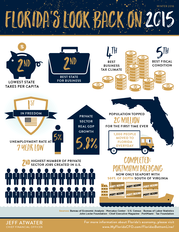Description
FLORIDA’S MIGHTY
MIDDLE MARKET COMPANIES
What is the Middle Market?
Companies with Annual
Revenue between
7,000 Businesses
4 in every 5
Employ 1 in every 5
of Florida’s Workforce
- $1B
$10M
Annual Total
Revenues of
$
Middle Market
Companies in
Florida Plan to
Invest Instead
of Save
SPRING 2015
$275 Billion
Employment Growth
Past 12-Months
6.7%
U.S. 5%
Revenue Growth
Past 12-Months
Florida’s Breakdown of Middle Market
Companies By Industry
Transportation,
Communications,
and Utilities
6%
Manufacturing
Retail
Florida
and Real Estate
15% Wholesale
27%
7% Healthcare
Source: National Center for the Middle Market
JEFF ATWATER
Jeff Atwater | Chief OFFICER
CHIEF FINANCIAL Financial Officer
National
Local Economy
Local Economy
National Economy
National Economy
Global Economy
9% Finance, Insurance,
13%
Business
Services
Florida’s Middle Market
Company’s Conï¬dence
11% Construction
12%
8.6%
U.S. 7.2%
Florida
Florida
Global Economy
79%
76%
62%
81%
73%
53%
For more information about Florida’s economy, please visit
Florida’s Bottom Line 9
www.MyFloridaCFO.com/FloridasBottomLine/
.









